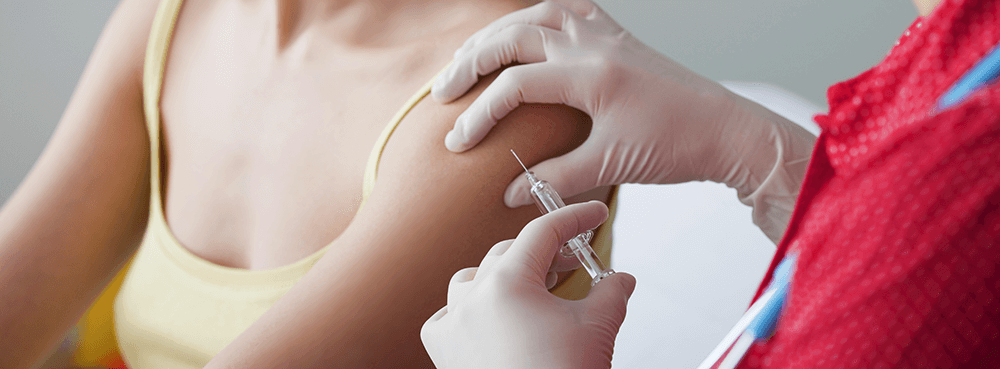Sharps Injury Awareness in North America | A brief history


A needlestick injury (otherwise known as a percutaneous injury) is the penetration of the skin by a needle or other sharp object which, prior to exposure, has been in direct contact with blood, tissue or other bodily fluids. Today there is a reasonable awareness within healthcare settings of the infectious disease transmission risk caused by sharps injuries, however this was not always the case. This blog will review the history of sharps injury awareness in North America.
A 37-year historical snapshot
The awakening of Sharps Injury awareness began with a seminal study published in 1981 by McCormack and Maki. This pre-AIDS study revealed that only 8.2% of US healthcare workers reported sharps injuries, and 23.7% of injuries reported were sustained during disposal of used needles. Two years after this study was published, the first healthcare worker occupationally contracted HIV, an incident that gave a new reality of consequence to needlesticks and launched a global spotlight on preventative strategies.
A follow up annualized study by McCormack in 1991 revealed an alarming 18.7% of healthcare workers reported sharps injuries; a figure indicating that more than a million healthcare workers in the United States alone were sustaining a sharps injury each year. At the time this study was published there was little motivation from the US Occupational Safety and Health Act of 1970, or from healthcare employers to reduce blood-borne pathogen (BBP) risk. Petitioning from US healthcare workers unions drove OSHA to promulgate the BBP standard, adding to the existing requirements more specific actions including hepatitis B vaccinations, however despite the renewed focus it neglected to reduce sharps injury incidence.
The Needlestick Safety and Prevention Act
In November 2000, the Needlestick Safety and Prevention Act was signed into law for the US and became effective in April 2001 when signed by President Bill Clinton. This act required American hospitals to make safety-engineered sharps devices available to their workers (wherever appropriate) as an injury preventative strategy.
The passage of this federal needlestick legislation was driven by the American Nurses Association (ANA) and other healthcare workers advocating for stronger protection against occupational exposure. Karen Daley who was President of the ANA affiliate in Massachusetts at the time and a very strong advocate for the federal OSHA amendment, was herself a sharps injury victim who had contracted HIV and Hepatitis C via a used needle.
In the first year after the NSPA law came into effect, sharps injuries dropped by as much as one third according to the US Centers for Disease Control and Prevention (CDC), giving rise to optimistic projections for continued injury reductions. However unfortunately the initial success of the program was not an early indicator of future results and in the intervening years incidence of sharps injuries plateaued. In 2007 the national healthcare injury surveillance system operated by the CDC was discontinued, a direct reflection of the loss of national focus around the issue.
Where does this leave us today?
The OSHA bloodborne pathogens standard requires healthcare employers to put in place adequate safety measures where there is occupational exposure to blood or other potentially infectious materials. Under the standard, employers are required to evaluate, select, and use engineering control (i.e. needleless systems, safety-controlled sharps containers, or sharps with engineered sharps injury protections) to eliminate or minimize exposure to contaminated sharps. Whilst the law is clear in what it states, we’re still not seeing national adoption at a level that is appropriate to the risk.
Today it is estimated that over 300,000 needlestick injuries still occur in the United States and more specifically at least 50,000 a year in Canada with over 400 million blood draws being carried out every year across North America. Every percutaneous needlestick and sharps injury carries a bloodborne pathogen infection risk; well-known examples include Hepatitis B (HBV), Hepatitis C (HCV), and Human Immunodeficiency Virus (HIV), the virus that causes AIDS. What is less known is that there are more than 60 less known bloodborne pathogens that can be transmitted through needlesticks, including malaria, herpes and syphilis. While sharps injury awareness has been given a strong voice by ANA and other healthcare worker associations, there still remains a silent dismissiveness that sharps injuries are “part of the job”
Canadian Regulatory Resources:
Unsure what resources are available to you regarding sharps injuries in Canada? CCOHS, Canada Centre for Occupational Health and Safety, is an authority and maintains an updated page of material regarding Needlestick and Sharps Injuries that you can find here:
This page answers and expands on important questions like:
- What are the hazards of needlestick and sharps injuries?
- How do needlestick injuries occur?
- How can needlestick and sharps injuries be prevented?
- What steps are involved with a surveillance program?
The Centre for Communicable Diseases and Infection Control at the Public Health Agency of Canada (PHAC) updates guidelines to protect you and your staff from exposure to all infection-causing agents in healthcare settings. The current guideline is titled, “Routine Practices and Additional Precautions for Preventing the Transmission of Infection in Healthcare Settings.” PHAC also has created a workbook to help design and implement a sharps injury prevention program. Download their workbook here. Start your program today and protect yourself and your colleagues!
We're proud to make an impact
While we are not on the front lines of healthcare, at Daniels Health we are proud that our solutions and the work that our teams do, does have a direct impact on sharps injury prevention. Our world-leading sharps container is an engineering control that has prevented thousands of container-associated needlestick injuries since it was first launched on the global stage in 2000, and is the only container in the North America that meets all the requirements set out by the FDA, DOT, OSHA, ASTM Standard, and NIOSH, as well as meeting and exceeding over 45 safety and user requirements set out by healthcare workers.
Download our Sharpsmart Featurs and Benefits list to see if your sharps container holds up to our standard.
